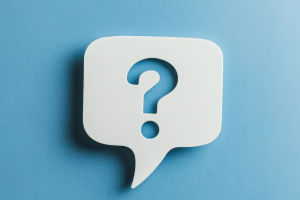These days, having a security camera at home isn't just for big houses or offices—it's something we can all use to protect our loved ones and property.
But with so many options out there, it's easy to get overwhelmed. So today, we're going to walk through how to choose the right camera and how to set it up properly, step by step. Ready? Let's dive in together!
First Things First: What Types of Cameras Can We Choose?
When we start shopping for a security camera, the choices might seem endless. To make it easier, here are the main types:
• Analog cameras – These are more budget-friendly but offer basic video quality and fewer features.
• Digital cameras (IP cameras) – These give us clearer images and extra features like night vision, motion alerts, and remote viewing through apps.
• Wireless cameras – Super easy to install, no need for messy wires. But we'll need to watch out for Wi-Fi signal issues and keep an eye on battery life.
• Cloud-based systems – These let us store videos online and view them anytime, anywhere. Just make sure your internet speed and data security are up to the task.
Things We Should Consider Before Buying
Before we click “buy now,” let's think through these key points:
• Size of the area – A larger space may need a camera with a wide-angle lens.
• Lighting – If the spot is dim or dark, night vision is a must.
• Indoor or outdoor? – Outdoor cameras should be waterproof and dustproof.
• Budget – It's okay to start small. Choose something that fits your needs and wallet.
Tools We'll Need to Get Started
Before we begin installing, let's gather some basic tools:
• A screwdriver
• A drill
• Screws and wall anchors
• Cables (for wired cameras)
• The user manual for our camera
These will help us make sure the setup is secure and stable.
Picking the Best Spot for the Camera
Where we place the camera makes a big difference. Here's what we should keep in mind:
• View range – Choose a spot that lets the camera cover the area we want to watch.
• Height – Mount the camera around 2.5 to 3 meters high. That keeps it safe from tampering and gives us a better view.
• Avoid strong light – Don't place the camera where it'll face direct sunlight, or the video could turn out too bright or washed out.
Step-by-Step: Let's Install the Camera Together
Here's how we can get the job done:
1. Mark the position – Hold the camera where we want it, and mark the holes with a pencil.
2. Drill holes – Use a drill to make holes for the screws. Match the size of the holes to the wall plugs.
3. Install the bracket – Fasten the mount onto the wall tightly.
4. Connect power – If it's wired, plug it into the nearest outlet. If it's wireless, make sure the battery is charged and connect it to Wi-Fi.
5. Fix the camera – Attach the camera to the bracket and adjust its angle for the best view.
Testing Time: Are We All Set?
Once everything's installed, let's test it:
• Connect to the monitor or app – Follow the manual to pair your camera with the screen or phone.
• Adjust the view – Use the live feed to tweak the camera angle.
• Try out features – See if night vision, motion alerts, or app notifications work as they should.
Where Should Our Videos Go?
There are a few ways we can store our camera footage:
• Local recorders (DVR/NVR) – These save videos to a hard drive right at home.
• Cloud storage – Videos get stored online, so we can check them from anywhere. Just be mindful of bandwidth and storage fees.
• SD cards – Great for smaller setups, just pop in a memory card and go.
Let's Not Forget Maintenance
To keep things running smoothly, let's do regular checks:
• Wipe the lens – Dust or dirt can blur the view.
• Check power and connections – Make sure nothing's unplugged or disconnected.
• Update the app or software – This helps us keep things safe and bug-free.
Be Careful About Privacy
We should always follow the law when installing cameras. Never place them in private spaces like bedrooms or bathrooms. And only use footage for safety—not to spy on anyone.
Wrapping Up, Lykkers!
Setting up a security camera at home doesn't have to be complicated. As long as we choose the right device, install it properly, and maintain it regularly, we'll have peace of mind knowing our family and property are protected.
Have you installed any cameras at home yet? Or thinking about it? Drop us a comment—we'd love to hear your thoughts!


